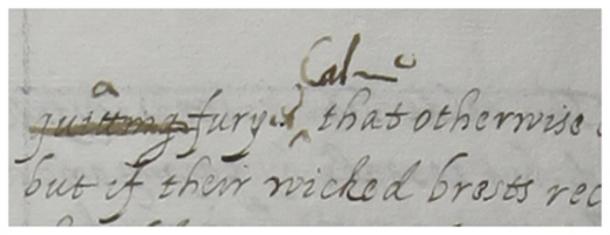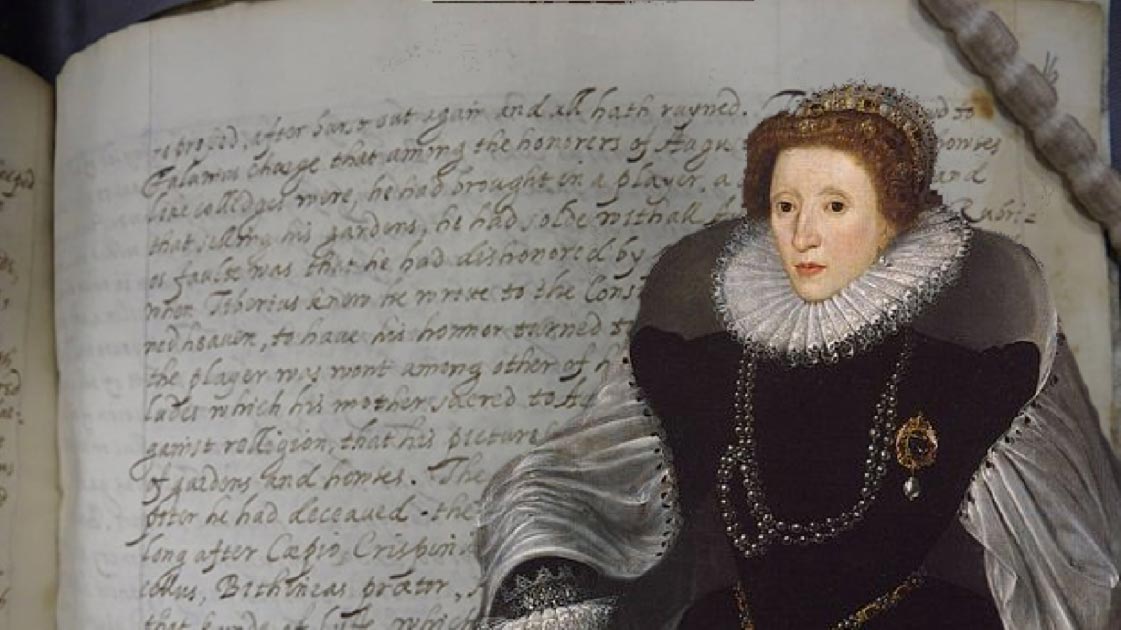Queen Elizabeth I Unveiled As ‘Messy’ Translator of Roman Text
A famous 16th century work from the reigns of Tiberius through to Nero (14-68 AD) has been preserved at Lambeth Palace Library for over 400 years at the official London residence of the Archbishop of Canterbury. And now it has become apparent that the translator of this famous Latin-to-English translation of ‘Annales - a history of the Roman Empire,’ was none other than Queen Elizabeth I.
Clues From Queen Elizabeth I's ‘Extreme’ Letters
Researchers from the University of East Anglia say their discovery might have “important implications” on historians’ understanding of the political and cultural nature of the Elizabethan court. Lead author of the new study, John-Mark Philo, said the corrections his team found in the translation were a match for Elizabeth's late hand, which he describes as “idiosyncratic”, if not downright “messy!”

Detail of the manuscript which Queen Elizabeth I is believed to have translated. (Lambeth Palace Library)
The researchers found persuasive similarities between the ‘virgin queen’s’ unique and distinctive handwriting style which they had previously discovered in numerous other manuscripts, including “ruled out lines”, which according to a Daily Mail report suggests the queen appears to have “hastily” corrected herself. Furthermore, the historic queen’s writing was identifiable to specialists as it holds several clues, such as an extreme horizontal letter ‘m’ and broken stems in her letter ‘d.’
- Queen Elizabeth I: The Controversies and the Accomplishments
- John Dee: Scholar, Astrologer, and Occult Practitioner that Captivated the Royal Court of 16th Century England
- Hiding to Avoid Hanging: Priest Holes, Hidden Chambers, and Secret Passages

The extreme horizontal letter ‘m’ helped the researchers identify the translation as the “hasty work” of Queen Elizabeth I. (Lambeth Palace Library)
Watermark Symbols Close the Case
Among the evidence leading to the researchers pointing fingers towards Elizabeth I as the translator, the first book of the Annales is based on original works by Roman historian and senator Tacitus and describes the death of emperor Augustus and the rise of emperor Tiberius. The researchers found the Lambeth Library manuscript retains “the density of Tacitus's prose and brevity,” strictly following what they call “the contours of the Latin syntax” - at the risk of obscuring the sense in English. This style, they think, was adhered to in other translations by Elizabeth I, which the historians also compared with other translations of Tacitus.
Further to the tone and style of the translation, and all these visual writing indicators, the paper on which it was made was found to hold watermarks featuring a rampant lion symbol with the initials “G.B.” on a crossbow countermark. The handwriting and linguistics specialists from the University of East Anglia say this type of watermark and paper was particularly popular with the Elizabethan secretariat in the 1590s and the symbols have been found on other translated documents and personal correspondence of Elizabeth I.

The "Darnley Portrait" of Elizabeth I of England. (Public Domain)
Reading What I Write, Is Not My Problem…
Analyzing key indicators such as handwriting style and paper stock the experts have determined the monarch who ruled from November 17, 1558 until her death on March 24, 1603, was behind the translation of Tacitus's Annales, but it was her “messy” writing that turned the initial key in the mystery. Speaking of this, the team of researchers said that the higher you were in the social hierarchy of Tudor England, the messier you could let your handwriting become, and for the queen of England, comprehension was “somebody else's problem.”
Much has changed with regards to writing over the last 400 years and while at the time of Elizabeth I 99% of Britain were illiterate, today 99% of the population can read and write and this reflects greatly on the day to day tasks of the current monarch, Queen Elizabeth II. Did you know? On average, every year, according to the Queen’s website, Royal.uk, she receives approximately 60,000 pieces of correspondence with about 70% from the UK, 10% coming from Commonwealth countries, and 15% from other overseas countries.
How to Write to The Queen
Because Queen Elizabeth II is a constitutional monarch, Her Majesty will not intervene in political disputes or those of a personal nature and for security reasons the Queen’s Correspondence Team are unable to pass her any unsolicited gifts, but you can write to Her Majesty at the following address:
Her Majesty The Queen
Buckingham Palace
London SW1A 1AA
- Bed Bought Online for £2200 May be 15th Century Bridal Bed of King Henry VII
- The Life, Achievements and Atrocities of Oliver Cromwell
- X-Ray Images Show Hidden Features in Painting of the Enigmatic John Dee

Buckingham Palace. (Pixabay License)
Now, if you do wish to write to the Queen there are some formalities you might chose to adhere to which will rise the probability of her hearing your missive at one of her morning meetings. Always open your letter with “Madam” and close it with the form “I have the honour to be, Madam, Your Majesty's humble and obedient servant.”
And for those of you that simply cannot bow down to another human to this extent, this traditional approach is by no means obligatory, but your letter will hit the “read later” pile, with the other 59,999.
Top Image: Detail of the manuscript which Queen Elizabeth I is believed to have translated. (Lambeth Palace Library) Insert: Detail of the Sieve Portrait of Queen Elizabeth I (1583) by Quentin Metsys the Younger. (Public Domain)
By Ashley Cowie




















Comments
Never occurred to me to write to the queen – although that end salutation would be wrong for me, I am an American citizen and we are not her humble and obedient servant … I think there wa a war about that a few hundred years ago.